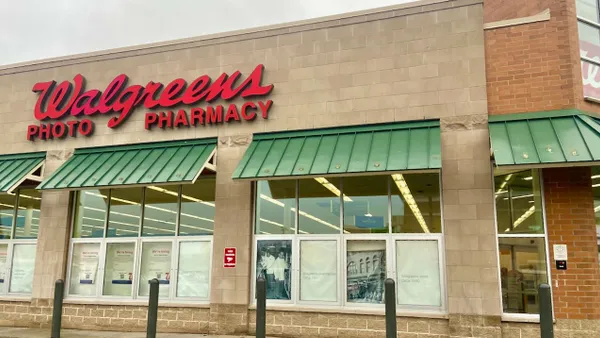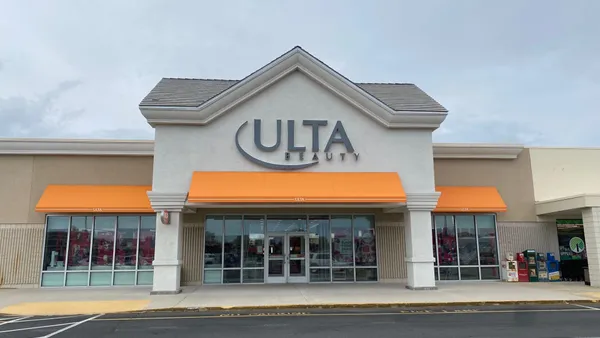Dive Brief:
- Bon-Ton said it has failed to make a $14 million interest payment, due Dec. 15, on a group of second-lien secured notes, according to a filing with the Securities and Exchange Commission. On Tuesday, analysts with ratings agency S&P Global downgraded some of the department store retailer's debt to a D, the agency's lowest rating, and gave the company overall a rating of SD, indicating it was in selective default on one or more of its obligations.
- S&P analysts wrote that Bon-Ton's nonpayment was likely an effort to "preserve shrinking liquidity" and that a debt restructuring, either through bankruptcy or out-of-court, "is likely in the near future." Bon-Ton did not immediately reply to requests for comment.
- Following the missed payment, Bon-Ton moved into a 30-day grace period with its lenders, but S&P analysts wrote on Tuesday that they did not expect Bon-Ton to make the payment within the grace period.
Dive Insight:
Concerns and rumors about Bon-Ton's financial health have been hanging over the retailer for months. Many analysts saw the company as having the liquidity to chug along through the holiday season and into next year, when several major debt maturities loomed.
But circumstances can change on a dime, as the world saw with Toys R Us, which also seemed to have the financial wherewithal to make it through the year and into next. That was, until a large number of suppliers began demanding better terms, creating a sudden need for $1 billion in liquidity that the company didn't think it would need.
Worryingly, earlier this year some Bon-Ton suppliers reportedly pressed for tighter terms on shipments. Such supplier troubles echo not just the lead-up to Toys R Us' filing, but that of many retail bankruptcies, including Gymboree, Charming Charlie and others.
The company has $572 million in debt due next December and carries $850 million altogether, according to Moody's. The retailer's debt has been rated at distressed levels for some time now, and S&P has listed the company as one of the retailers most at risk of bankruptcy. In a Nov. 17 report, analysts with Fitch Ratings, after leaving Bon-Ton off an expanded "loans of concern" list in October, wrote, "While the company has enough liquidity to support 2017 holiday working capital needs, there is risk of a debt restructuring over the next 12 months."
In September, media reported that the retailer hired AlixPartners for help with its turnaround efforts and was also looking for a financial adviser to help with a possible debt restructuring. The month of May saw an executive shakeup at the retailer, in which Bon-Ton announced that COO William Tracy would replace previous CEO Kathryn Bufano.
Bon-Ton's top-line sales have been falling since 2007, and the retailer hasn't posted a positive profit since 2010, according to regulatory filings. Comparable sales for Bon-Ton have been negative for the past nine quarters, according to an August report from Moody's.
Last week, Bon-Ton reported third quarter sales of $545.3 million, a 7.6% drop from the year-ago period. Its comparable store sales fell 6.6%, which the company attributed to unseasonably warm weather and poor mall traffic. The retailer's net loss also expanded to $44.9 million, a 42% increase over Q3 2016. On top of $18.9 million in interest expenses for the quarter, Bon-Ton lost more than $26 million from its operations.
In Q1 of this year, comparable sales fell by 8.8% — the worst among its department store peers with the exception of Sears, according to Moody's.
As Philip Emma, a retail analyst with Debtwire, pointed out in an October report, Bon-Ton had been able to cut overhead to improve margins in the face of declining sales, but "there is a finite level of costs that can be taken out of a retailer without having a serious impact on the ability to reverse a traffic decline." But he also noted that Bon-Ton can avoid bankruptcy, "if it can maintain vendor support and start to generate some earnings improvement in 2018."
Ultimately, though, even larger concerns loom over the discount chain. "[T]he longer-term question remains as to the viability of its business model beyond just limping along at a slow, steady rate of decline," Emma wrote.














